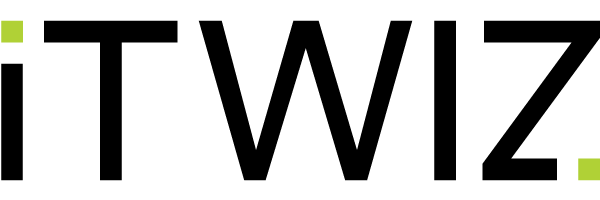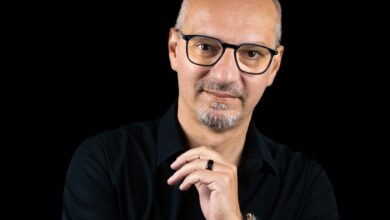In EnglishCreative Collisions
The starting point for Smart City is the quality of life
CREATIVE COLLISIONS
With Dr. Jonathan Reichental, assistant professor at the University of San Francisco’s School of Management; author of, among others. books “Smart Cities for Dummies,” “Exploring Smart Cities for Kids,” and “Exploring Cities Bedtime Rhymes”; former CDO of the City of Palo Alto, California; we talk about climate change; the role of cities in countering it; being “smart,” which should also trickle down to local communities; the need for a new generation of leaders managing cities, towns, villages, neighborhoods; or the role of drones in agglomerations.

Przemek Zakrzewski: What’s the weather today in San Francisco?
Jonathan Reichental: We had 40-45 degrees Celsius in some areas. Which is many degrees higher than the highest in recorded history.
Waldek Olbryk: All you have to do is look outside the window and I think no one can really question today, that we are changing the climate. This is the big problem that cities are creating but hopefully it can be solved by the cities as well.
Jonathan: I don’t think there’s a solution to climate change – at least not at this point. Our best hope right now is to slow down the rate of increasing average global temperature. Unfortunately, the rate at which it’s changing right now, if not managed, will be catastrophic.
Waldek: We’re looking at the same challenges as you, despite working in different worlds and trying to connect the different sectors.
Przemek: My work is tightly connected with technology, so I’m heading right now, Research Technology Center for ABB, which is a global company, working with a number of things related to technology that may have to live the life in a sustainable way. Among those technologies are things related to cities, electromobility, everything which is connected to electricity and converting energy into motion and motion into energy and process automation in the manufacturing and robotics.
Waldek: Our passion is really to connect even despite of those differences, something which we call creative collisions, one of the examples where we connected those different worlds was when we made this dance between robots and the school ballet. We really want to show that if you talk with the simple language between the different sectors it’s possible to create something new. So we also define it as innovation across sectors and this is how we want to educate ourselves.
Przemek: Jonathan, what would be the best definition of the smart city?
Jonathan: So without just saying one or two lines, which gives a definition, I always like to give a little bit of context to what we’re trying to describe. The way you get to a definition ultimately is to recognize that cities have remarkable challenges ahead. Look at traffic congestion, poor air quality, energy needs, lack of high-speed Internet, inequality carbon emissions, and more. We need new responses to these difficult problems. That’s what being smarter is all about.
Przemek: If you add another 50% or 75% more cars over the next decade or two, it’s not a sustainable trajectory.
Jonathan: Exactly, when you take all the aspects of an urban life and we’ll talk about those areas today, things like transportation, energy, health care, education, public safety, all the things that are important to a complete quality of life, our current trajectories are not sustainable. They’re all feeling tension from the pressures of a changing and a rapidly urbanizing world. So the question is what tools do we have?
Waldek: It’s very apparent in so many industries and so many parts of our life that technology plays the greatest role now.
Jonathan: Yes, we have better tools than ever before. These technology tools have the ability to create a better quality of life for more people.
Przemek: Do you use any other definition of the smart city?
Jonathan: Yes, the other definition that I use comes mostly from the Smart Cities Council, which is really the use of technology and innovation to deliver results in workability, livability and sustainability.
Przemek: Does it mean that the end game of changing this trajectory is more about those three elements or a dimension? Or it’s more about human behavior and mindset?
Jonathan: You made a very good point. First of all there is no end game. People say to me, what’s the smartest city in the world? Or could you list the five top? It’s probably not a very good question because it assumes that a city has reached a point which is measurable and acknowledged as, yes we are smart. There’s no such thing as that. Cities continue to evolve or progress indefinitely. We’ll go through different phases and so there is no end state and by the way, there is no actual „smartest city in the world.” I mean, that was just ultimately a branding failure in many ways.
Waldek: So what can we do?
Jonathan: What we can do is to build smarter communities and we can use technology and innovation. One of the reasons why I said technology and innovation contributing towards positive sustainability, livability and workability is the innovation piece is about behavior, it is about the human aspects and we don’t get changes by directing technology at a problem and I know this from having run many organizations and cities in terms of using tech. You can bring the greatest tech to the table, but if nobody embraces it or they don’t care, they push back. It’s a failure. And you’ve got to have full human leadership and technology augmenting that behavioral aspect.
Waldek: So if I can summarize, we can treat the city like innovation platform but at the same time, this innovation cannot go only from the technology, it’s more about a serving role for the people behaviors, how to enable those changes but at the same time I think we are obsessed by the fact that all the megacities should be the smart ones and I can see a lot of smaller cities that are much smarter in that sense with that journey that you just mentioned.
Jonathan: Yes, I think that’s a fair summary.
Przemek: Waldek you’re touching a good point about smaller cities. Jonathan, do you see any different ways of approaching smaller cities, smaller communities? Maybe they are more manageable from the perspective of behavior or attitude? Maybe instead of focusing on 100 biggest cities like San Fancisco, we should focus on small communities and make them change the world?
Jonathan: This is such an important point. When people do talk about smart cities, you hear the same names. You hear Barcelona, Helsinki, Copenhagen. I always say, keep going with your list, because eventually, very quickly, you’re going to run out of cities. In the United States alone, there are 90,000 public agencies. A lot of those are different types of communities, cities, towns, villages, different districts etc. Again, if I ask a person how many communities or public agencies would you say in the United States are on a journey towards being smarter?
People will list, maybe 20, 30, or 40. As a percentage of the 90,000 agencies in the country, these barely even register as a statistic. So we are very much at the beginning of this journey. But, there are reasons to be optimistic. There is a new generation of mayors, a new generation of city managers emerging all over the world. These are Millennials and Generation X. They’re Internet native, they understand tech. They understand that data plays an important role and they’re bringing that into the public context. So that gives me a lot of hope. Many of the older leaders are coming to the end of their careers.
Przemek: They just want to retire comfortably…
Jonathan: Yes, so we do need a new generation of leaders to lead this. In my book “Smart Cities for Dummies” I do address this very issue of big cities versus small cities and I’m critical that we have put too much emphasis on the big cities because they have the scale and the money. Often they have just a level of sophistication that small cities don’t have and so it’s like, if we change all the lights to make smart lights in San Diego, that’s what it means to be a smart city? And if you look at a smaller Silicon Valley town that has maybe 45,000 people, they’re not doing that in any hurry because they can’t but it doesn’t mean that they don’t have the ability to use data, for example, to make better decisions for their community.
Waldek: You are touching a few elements that I would like to underline. It’s really about the personal agency leadership, the people who want to influence, can do it even if they are in the small communities. I remember the quote from Dalai Lama who said that if you think you are too small to make a change, try to sleep in the room with a mosquito. So I think that it’s really about the agency ownership and that’s why I really like your education passion. You are touching the new leaders that are coming onto the stage but also the new generation. The fundamental thing about the education is also your book “Smart city for the kids” and I treat it really like a continuation of your mission. What was the reason of that book for the kids?
Jonathan: When I was a leader of technology in a city here in Silicon Valley, people noticed what we were doing and they were very interested in what we were doing and the comment I would get a lot was: Jonathan how do we make the other CIOs in Silicon Valley and in the Northern California area think like you? I said, I don’t know. I don’t know yet. Let me think about that, let me see, I’ll form an opinion, so I had a chance to meet with many of them because we have these get togethers and meetings and I was surprised how conservative they were.
I was surprised how they were super focusing on some of the most basic technology things like how to have a social media policy or should we back up our end point devices. I’m not meaning to be offensive it’s just an observation that these CIOs had been in these positions for maybe 20 – 30 years and were at the end of their careers and this goes back to my other point. I was never going to change them and they would never change and I said to the people when they asked me: Jonathan, how do we change all these CIOs to be more like you? And I said, we don’t, we don’t try to change them. They will retire and a new generation will replace them.
Waldek: What we need to focus on is the new people who are coming in and not waste our energy on something that isn’t going to change ever.
Jonathan: Yes, when I wrote “Smart Cities for Dummies” and I sent the book to many of my friends as just gifts, I was interested in their feedback and I asked, what do you think of the book? And they had said, well, we haven’t read it yet because our kids are reading it. I was really surprised. They said that in the book I talk about fun stuff, like how we went from horses to cars and what that meant to cities and about aqueducts and how you actually move water and the kids love that stuff. I said, my goodness, I’m super focused on working adults and I forgotten that we have teenagers and young kids who have no exposure to this, zero, nobody’s talking to them about the future of the places they’re going to live. In school they do maybe a little bit here in the US. They barely even talk about civics anymore. It’s a big issue so I immediately got interested in this. How do I begin to reach children and teenagers? How do I enable them to have a better understanding of the future they’re entering. So, I co-authored a book for them
Przemek: Did you consult kids when you were writing the book? How do they see the future?
Waldek: I think that kids are much more open to the new technology, which is very difficult to accept by the adults, they don’t want to learn. You can put for example, self repairing materials in front of the kids and they would be thrilled but adults would not be sure whether it’s practital or even possible.
Przemek: And business gets in the way, is it profitable or not?
Jonathan: When creating the book, we spoke to many children. But the people we got a lot of advice on were teachers.
Przemek: Teachers? Interesting.
Jonathan: Yes, so we actually had a little committee of teachers for children of the age group that we were targeting and we validated whether what we were saying was in a form that they understood and you’ll notice in the book, for example, this things like color this picture and share it with somebody. It turns out that in our contemporary understanding of education is the kids, if you give them a piece of paper and you tell them to do a puzzle or draw, they’ll maybe do it, but they will do it if they know that they can show it to somebody or give it to a parent or teacher. So we put this emphasis on sharing.
Waldek: It’s incredible that we are discussing smart cities and the main part actually is about teaching leadership education and how to keep the beginner’s mind all the time. Because I think this is really about the courage, we have a list of questions about how the smart city definition changed after COVID, what is the good technology, etc., but without that, what you just mentioned, I think we will be just good theoretical people without an implementation and the courage to do the new things.
Przemek: I have one topic also linked to your previous statement about smart mayors of cities. So how would you define the smart mayor of the city? What kind of characteristics this person should have? What age? Are they afraid of the risk and tension? How do you define the modern leader of the city?
Jonathan: It’s very apparent that technology is not the limiting factor. There’s a lot of people in big tech firms and even in startups in Silicon Valley, I know a lot of them, who their entire energy is focused on a solution that does something really important and I have so many examples. There’s one startup. They actually have a really good idea for the cities that want to innovate, cities that want to try new ideas, but they don’t have a system for that. So they go out, they build a beautiful product and they go to market and nobody buys it, right? Or another scenario is they go to market and some cities buy it, but they don’t use it, which is probably worse.
So I go back to the company and I ask: Did you train the city? Do you have a training program? And they’re like, well, we spent a couple of days with them and we told them how to use the product. And so I ask, do they know how to innovate? And they said: we don’t know. I said, so you’ve built a product and sold it to an organization that has no idea how to use it and doesn’t know how to innovate. You’ve actually got to do both, right? The biggest part here is you’ve got to work with the city for maybe months to build the competency and over a longer period a culture of innovation. Cities don’t know how to innovate. They need to be told. They need to be educated, so my point is that building a beautiful solution didn’t solve the problem.
Przemek: What about the leaders?
Jonathan: One of the observations and it’s a bit of a cliche, is that city leaders are risk averse. They only want to do things that work. They’re embarrassed by bad publicity, they don’t want to say we spent half a million dollars and we got nothing for it because community will then be angry and then the journalists will write a bad story. There’s a lot of incentives to be conservative. So what I’m seeing is leaders now who generally do trend towards a younger demographic. It’s not always the case. Michael Bloomberg, a very successful, innovative New York mayor was already much older when he became a successful mayor.
So there’s plenty of those people. But if you look at the cities around the world and I meet with these people, they are these city managers or mayors generally are tending to be more like Gen X, maybe 40 or 50 years old, where they’re really in a good and experienced part of their life and they’re ready to take some risks. They’re ready to communicate that, yes, we’re going to do the important stuff, we’re going to do the day to day operations but we’re also going to have an innovation lab where we’re going to try stuff or we’re going to have an innovation district where we try things or a living lab. And yes, we’re going to spend a ton of money and by the way, we might fail. They’re very, very clear about this.
Waldek: It’s crucial because we are living in the world, which is not accepting the failure. And it’s difficult to show people that sometimes you win, sometimes you learn and the political stake here can sometimes kill any innovation. It reminds me our conversation with Anne Stenros, she used to be chief design officer for the City of Helsinki and she was telling us the stories about the clashes between the politics and about the group that she wanted to bring from being clerk into something that have the courage and the power to change the city, it took her around two years to make those people believe that they can do it. So I think you are touching quite similar point.
Przemek: I just wanted to add that those types of challenges are the same regardless of the part of the world.
Jonathan: Helsinki of course is always held high as a great success story. People don’t realize it was tough to get there. People think it was easy for me because I was the head of technology in the center of Silicon Valley. And I say, no, you have it wrong, every time I had an idea, the first answer was always: no. Eventually if you persevere, you bring good arguments, you make the case, you’re prepared to experiment, people will begin to give you a little bit of room to explore those ideas.
Silicon Valley played a role, there’s no doubt but if I was a CIO who when I heard the first or second no I stopped I would never have done anything. I had to keep asking and keep tweaking my arguments and giving evidence. So it’s the fact that I was persistent and I brought the right messaging forward. I gave the decision maker the comfort of some sort of protection, that it wouldn’t make them look bad or here’s what would happen if it went wrong. So, there is an enormous piece of this which is about the capacity to be comfortable with additional risk, to take bold ideas forward and to know that you can fail and learn, that is acceptable in government at the right scale.
Waldek: Yes, we call it from compliance to courage, from confidence to curiosity.
Przemek: It reminds me of the philosophy when you think of the sportsman who sets the target and believes this is the thing we can achieve with consistency and discipline. Jonathan, I cannot resist to touch that idea as I learned from your book and your articles. What about the promising concept of mobility as a service, MaaS, on demand transportation or ground and air based delivery drones…Those concepts have been already present in theory for years as something that will happen. Do you still believe that those types of things will become a part of our reality and will change the city?
Jonathan: So a quick sort of related story that will help me answer your question. Before I was working for the city, almost 15 years ago, I was working with a big consulting firm and I was running the innovation group. It was a global multibillion dollar business, and part of my purview was to identify trends that were upcoming that we should be focused on and maybe investing in. One of the focus areas for my team, and we only had less than ten really strong focus areas, was the Metaverse. I made the Metaverse one of our priority areas and by the way, I used the word “Metaverse”. And I did talks and interviews with magazines.
I even wrote a very well-respected article for the Harvard Interactive Media Review magazine out of Harvard University. When Mark Zuckerberg brought up the Metaverse last year, I was wondering whether my article still existed. And I found it. It is online and it’s called “The Metaverse as a business platform”. That was 15 years ago!
So, at the time, people didn’t get it and didn’t believe in it, a few people did, they were enthusiasts. Anyway, it went away and last year Mark Zuckerberg says we’re going to pivot the company and Facebook is going to be all about the Metaverse. I share that story because it is a case of, often it takes a while to go from those of us who imagine a new future and the actual future being realized and the technology catching up. Another example I often use is the Uber business model. How did they build a $50 Billion business almost overnight? And it changed the way a lot of people consider taxis. So the idea that you are anywhere in a city and just using an app on your phone you can get a ride in a few mins; it’s game changing.
And the question is why did it only start in the last ten years? Well, one of the reasons is all the technologies have to be at the right level of maturity. You have to have GPS, Smartphones, A.I., social computing, payment systems, cloud computing etc. And only when you have all the right conditions and a willing customer, will the solution work. So that I say when you look at things like whether drones are going to dominate our skies and our streets, I make a prediction that this is coming in a big way. It will be unevenly distributed, of course, but not all the necessary preconditions are in place yet.
Przemek: So it is possible?
Jonathan: Of course, as communities get better, 5G, the variety of things that will be necessary for an ecosystem, then you start to see this sort of critical moment, where you turn the corner. And so you asked about mobility as a service I think it has moved a little bit mainstream. I was in Hungary, in Budapest about a month ago and I met a colleague there and we were having lunch before we would go out and do our work across the city and he said, you need to download this app because we’re probably going to get on a bus, on a light rail and maybe get a bicycle and he said it’s done through one app. There’s a single Budapest app that actually coordinates all public transportation across Budapest. Here in Silicon Valley, we have kind of a single app for the trains and the buses but it needs a bit of work.
Drones are game changing in that they will make cities behave and look differently. One of the things I’ve always said to the drone makers and cities is I hope you’re working on the noise because people are not going to like the noise. And they tell me, yes, we’re going to have quieter drones, because, can you imagine hearing thousands of those every day? Here in the U.S., the Federal Aviation Authority is mapping the country out for drone highways in the sky.
Waldek: It reminds me a little bit of the streets in movies like Blade Runner or Star Wars, where you have the highways for flying vehicles.
Jonathan: Yes, that would be true. But smaller for non-human packages or doing things like surveillance or photography. I’m not as bullish on flying cars for the general population. I think there actually is a couple of big challenges there. We will probably overcome some of the technological issues, the battery life and things like that. It’s the cost that is the biggest burden of having a fleet of flying passenger drones. So I’m keeping a little bit more of an open mind about that topic. For example if you go to New York City today and you need to quickly get to Manhattan you can get a helicopter now pretty cheap, it’s like $125 from JFK, it takes a few minutes, and no traffic! There’s a couple of startups that have figured out a price point, because Uber when there’s really bad traffic can be about $100. So people are prepared to pay another $25 or $50 to get the convenience of a helicopter. But mass population can’t pay for that.
Przemek: Jonathan, so Metaverse, is it possible that the city will be able exist in a virtual space?
Jonathan: I don’t know actually, even though I gave you the story of predicting Metaverse 15 years ago. I’m still not sure about it in the mainstream. I think there’s no doubt the Metaverse will be used for training, in education, it’ll be huge in gaming so there are industries where Metaverse is a no brainer. But is the Metaverse an alternative to the Internet we have today? Is it something that the broad population will use? I think I have some really big questions about that.
Przemek: I spoke with many businessmen in the heavy industry. They say, yes, Metaverse is great but only for training and they don’t believe that it may bring some value in everyday use.
Waldek: Jonathan, what are the most common pitfalls or the failures in creating a smart city? What to avoid? What to really push for?
Jonathan: It’s a long list, actually. At the very back of my book “Smart Cities for Dummies”, I do have a list of things to avoid but maybe you want one or two, perhaps. If a mayor assumes that smart city means this is a massive technology project that’s going to be run by the technology department and it’s going to be about IoT devices, surveillance and data then I think they’re starting from the wrong place. I think that in the last ten years unfortunately emphasized too much of this being a technology-centric project.
Certainly you have to have a good digital infrastructure and highspeed Internet in your community it’s like a starting point. But beyond that, the starting point really is quality of life, and I’d work backwards from there. I think the mistake is they they work from technology and work backwards. And so a better conversation would be not so much how do we build a smart city, but how do we progress with creating a smarter community, one in which we deliver on some of the bigger challenges we have. One of the things that cities want is not just that they have better transportation, good quality air and water and health care; cities all over the world are desperate to have a sense of belonging and more placemaking. They want places for communities to congregate and to build relationships.
Waldek: We not always have been able to see this…
Jonathan: For a lot of the second half of the 20th century, we were building the opposite of that, putting people in suburbs and creating malls and really engineering towards cars. And so I think the best practice is to begin with quality of life and what’s important to your community and work backwards from there and recognize that this is not a tech-centric project. The second thing would be the belief that a smart city requires a lot of money. And the only way you can deliver on this is if you have abundant cash and you have no other problems. And every small town or every medium sized city will say, you give us the money for it, we’re focused on our roads and our bridges and the answer to that is, a smart community takes many forms.
You need to bring a lot of people into the project, a lot of people into the conversation. People think of government and local government like a vending machine. You put in your taxes, and you get your product out. It hasn’t worked like that in decades, it requires the complete adoption of a collaborative, engaged set of stakeholders. And you don’t see that in a lot of places. The city hasn’t set the stage for that.
Przemek: I’m happy that one of the last sentences is more about human relations, community, bringing people closer as human beings to take care of each other. So that’s kind of the summary of what the smart city is about, isn’t it?
Jonathan: Exactly.









